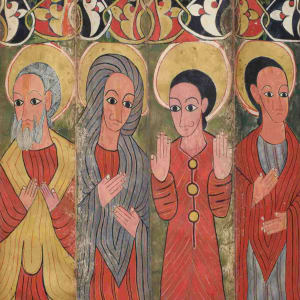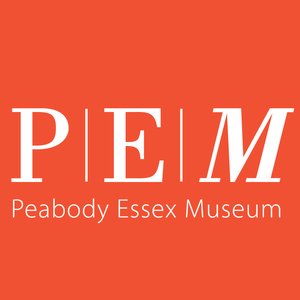Ethiopia at the Crossroads
Saturday, Apr 13, 2024 10:00a -
Sunday, Jul 07, 2024 5:00p
Where:
Peabody Essex Museum
161 Essex Street
Salem, MA 01970
Admission:
Unknown
Categories:
Art, Date Idea, Good for Groups, Rainy Day Ideas
Event website:
https://www.pem.org/exhibitions/ethiopia-at-the-crossroads
This extraordinary exhibition celebrates the artistic traditions of Ethiopia from their origins to the present day. Explore nearly 2,000 years of Ethiopian art and culture through more than 200 objects, including painted religious icons, illuminated manuscripts, gospel books, coins, metalwork and carvings paired with works by renowned contemporary Ethiopian artists including Wosene Worke Kosrof, Julie Mehretu, Helina Metaferia, Aïda Muluneh and Elias Sime.
Seated in the Horn of Africa between Europe and the Middle East, Ethiopia is an intersection of diverse cultures, religions and climates. Ethiopia at the Crossroads examines the enormous cultural significance of this often-overlooked African nation through art that tells the story of the region’s history and demonstrates the vibrancy of cross-cultural exchange and the human role in the creation and movement of these art objects. This exhibition draws from PEM’s collection of Ethiopian icons and processional crosses, and is augmented with loans from American, European and Ethiopian lenders.
Follow along on social media using #EthiopiaCrossroads
Ethiopia at the Crossroads is co-organized by the Peabody Essex Museum, the Walters Art Museum and the Toledo Museum of Art. The exhibition is made possible by a grant from the Institute of Museum and Library Services (MA-253352-OMS-23) and two major grants from the National Endowment for the Humanities: Democracy demands wisdom. The exhibition at PEM is made possible by the generosity of Carolyn and Peter S. Lynch and The Lynch Foundation and The Gladys Krieble Delmas Foundation. We also thank James B. and Mary Lou Hawkes, Chip and Susan Robie, and Timothy T. Hilton as supporters of the Exhibition Innovation Fund. We recognize the generosity of the East India Marine Associates of the Peabody Essex Museum.
Any views, findings, conclusions or recommendations expressed in this exhibition do not necessarily reflect those of the National Endowment for the Humanities.
-

SponsoredRockport Guided Coastal Kayak or SUP Excursion from Boston
Saturday, Jul 05, 2025 12:30p
Rockport Harbor
-

SponsoredCurated Cuisine: Let’s talk lobster with Row 34’s Jeremy Sewall and Select Oyster’s Michael Serpa
Monday, Jul 14, 2025 6:30p
WBUR CitySpace
-

SponsoredGuided Tour of Historic Castle Hill o n the Crane Estate: Round Trip Transportation from Boston Included!
Saturday, Jul 05, 2025 11:30a
Crane Estate
-

SponsoredDay Trip from Boston: Kayak Castle Neck River at Crane Estate
Saturday, Jul 05, 2025 11:30a
Crane Beach
-

SponsoredAffordable Spanish Classes in Boston (in-person and online courses) | BASE
Monday, Jul 07, 2025 goes until 07/18
Boston Area Spanish Exchange (BASE)
-

SponsoredExplore The New England Botanic Garden at Tower Hill: Day Trip from Boston
Sunday, Jul 06, 2025 11:00a
New England Botanic Gardens at Tower Hill
-

Sponsored


